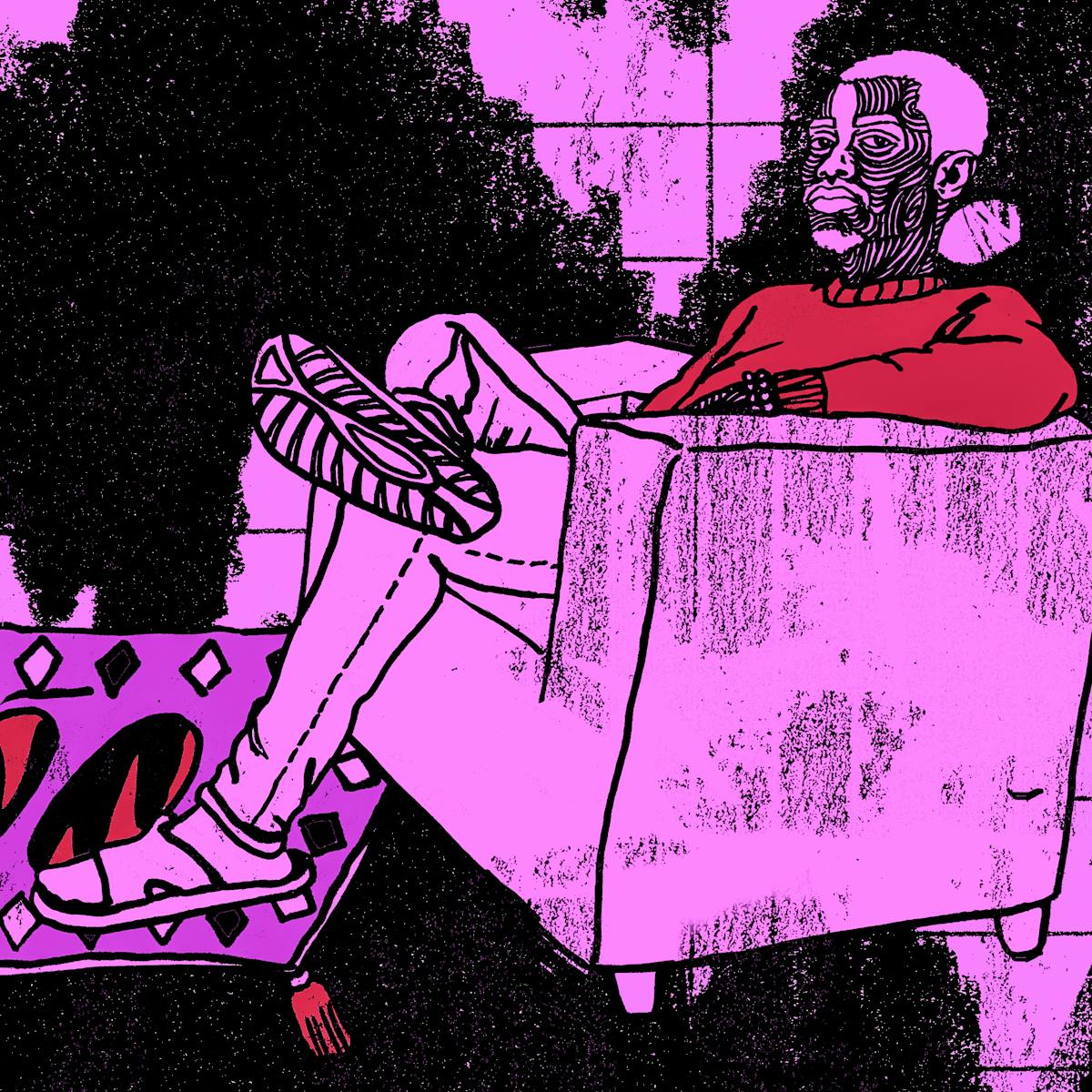When Ashley McFord-Allister was diagnosed with schizophrenia, treatment to confirm his gender slowed to a crawl. Here he explores how you can have a mental illness and be transgender simultaneously, and why the medical community – and society in general – needs to change their definition of the ‘accepted truth’.
Stigma, schizophrenia and being transgender
Words by Ashley Ford-McAllisterartwork by Olivia Twistaverage reading time 6 minutes
- Article

When the whole world seems convinced that being transgender is a form of madness, what does it mean to be both a transgender individual and someone with a mental illness?
I’m a transgender man, though I rarely use the ‘trans’ prefix. I completed my transition, to the extent I’m happy with, in 2011, and have been living, loving and working as your run-of-the-mill working-class guy ever since.
In 2007, I was diagnosed with schizophrenia. This slowed my transition down by almost two years, because when you’re assumed to be crazy by reason of your identity, it’s a bit rich, as far as the medical community are concerned, to have a genuine mental illness as well.
The first reaction of many people – both individuals experiencing the twists and turns of personhood, and the professionals they come into contact with – is to assume that the transgender feelings are part of the actual mental illness.
I’d expressed definitively male aspirations from the age of five. Aged nine, I cut my hair short and insisted on being called by a male name (the same name I use now, almost a quarter of a century on).
At 20, following what is recorded as my first psychotic episode (but was more likely at least my second or third), I considered mentioning that I saw myself as male, rather than female. However, I decided not to do so, and quietly hoped that the conviction that I was ‘supposed to be’ male would be resolved by whatever medication I was prescribed.
In the 1990s, there was very little representation and information about transgender people, and nobody seemed to have a problem with me ‘being a tomboy’. Had I been born in the 1990s, rather than growing up in them, I might have discussed how I saw my gender sooner; it simply wasn’t a possibility I was aware of as a child.
An either-or situation
Many people with mental illnesses avoid raising transgender feelings or experiences with consulting clinicians. It takes so long to actually get to see a professional about mental health challenges in general that people don’t want to do anything that might cause treatment to be put on hold. Meanwhile, people who are already being seen by professionals as transgender individuals can be very wary of mentioning mental health issues, as these are frequently used as a reason to discontinue hormone therapy, and put the person off the clinical pathway to transition.
The psychiatric community has, to date, been very insistent that you can either undergo gender-confirming treatment, or receive treatment to help stabilise and manage an unrelated mental health condition; doing both simultaneously is, they insist, not possible. Society at large loudly asserts that being transgender is madness, yet transgender individuals wanting to medically validate their gender are required to be sane.
But we’re not always sane, because transgender experiences don’t discriminate. Your gender does not particularly care about your neurology, or your sanity, just as it doesn’t really care about your sexuality. Psychiatrists, however, care an awful lot about both, and they let their concern about them override the requirement that they treat their patients with courtesy, and with professional compassion.
Society at large loudly asserts that being transgender is madness.
In the face of neurodivergence or mental illness, psychiatry often denies transgender people the presumption of competence. We are no longer a relatively straightforward psychosocial ‘quirk’, to be quickly popped back on the track to being as close to cisgender as possible, but an unhinged mess that can’t be neatly tidied up .
It becomes an awful lot easier, as with many stubborn stains, to throw a rug over it and forget about it. The ‘rug’, in this case, being medical professionals’ insistence that our gender identity is simply a ‘manifestation’ of our wider ‘loss of contact with accepted reality’.
Schizophrenics like me are told that “fluid interpretations of gendered experience are quite usual with schizophrenia”. The fact that the most fluid my gender has ever been is wondering whether velvet T-shirts were a good look is glossed over with an assurance that I will have been experiencing shifts in my sense of gender but may not have been fully aware of them.
Individuals on the autism spectrum, meanwhile, are regularly ‘reminded’ that they “don’t really understand the concept of gender identity”. Despite this, many individuals I know, online and as friends, who are on the spectrum, both trans and not, are as certain and understanding of their gender as anyone else.
Creating more realistic expectations
Is transgender experience, or gender dysphoria, a kind of madness? As someone who has experienced being both transgender and clinically insane, no, it isn’t. Schizophrenia means I can struggle to understand and interpret the world around me, which causes me varying degrees of distress.
Transgender identities, by contrast, result in the world around the individuals living those identities struggling to understand and interpret them, causing the people of the wider world varying degrees of distress. ‘Mental illness’ is defined, in part, as causing distress to the individual experiencing it. I was never distressed by presenting as male; people around me were.
Are there overlaps between transgender individuals and those with mental illnesses? Very often, yes. Overwhelmingly, these overlaps are positive – a shared agreement that individuals are the authorities on themselves, their experiences and their identities. A common refusal to acknowledge that what society believes to be ‘obvious’, is, or deserves to be, the accepted truth. A letting-go of unrealistic expectations, and the radical acceptance of a very simple but frequently disputed truth: that if something does not cause harm to anyone, then it really isn’t an issue.
If something does not cause harm to anyone, then it really isn’t an issue.
Other overlaps are less positive, and come not from the communities themselves, but from wider society. These include the persistent association of transgender feelings with insanity, as well as the belief that other peoples’ reactions to our lived experience and personal expression matter more than our feelings about ourselves.
It is these overlaps that continue the stigma faced by both transgender individuals and those with mental health conditions. This stigma reinforces the barriers that prevent people, whatever their personal identity and experience, from being seen and accepted as ‘normal’.
About the contributors
Ashley Ford-McAllister
Raised working poor, diagnosed with schizophrenia in 2007; a lifelong learning curve based on these two core points. Married, with dogs. Interests mostly became obsolete at least a century ago. He/him.
Olivia Twist
Olivia Twist is an illustrator, arts facilitator and lecturer from east London with an MA in Visual Communication from the Royal College of Art. The key threads that can be found in her work are place, the mundane and overlooked narratives. Her striking visual language is comprised of a myriad of esoteric layers informed by a propensity for human-centered research methodologies.

